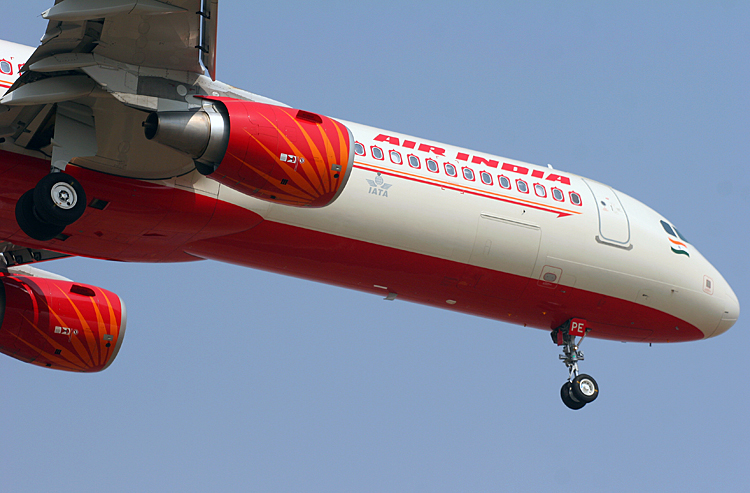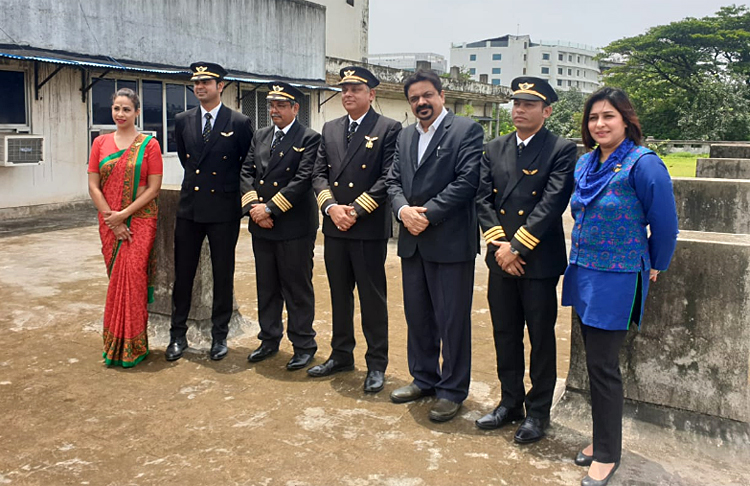INDIAN ARMED FORCES CHIEFS ON OUR RELENTLESS AND FOCUSED PUBLISHING EFFORTS

The insightful articles, inspiring narrations and analytical perspectives presented by the Editorial Team, establish an alluring connect with the reader. My compliments and best wishes to SP Guide Publications.

"Over the past 60 years, the growth of SP Guide Publications has mirrored the rising stature of Indian Navy. Its well-researched and informative magazines on Defence and Aerospace sector have served to shape an educated opinion of our military personnel, policy makers and the public alike. I wish SP's Publication team continued success, fair winds and following seas in all future endeavour!"

Since, its inception in 1964, SP Guide Publications has consistently demonstrated commitment to high-quality journalism in the aerospace and defence sectors, earning a well-deserved reputation as Asia's largest media house in this domain. I wish SP Guide Publications continued success in its pursuit of excellence.
- Prime Minister Modi Visits Punjab’s Adampur Air Base, Interacts with Airmen after Successful ‘Operation Sindoor’; Stern Message to Pakistan
- The layered Air Defence systems that worked superbly, the key element of Operation Sindoor
- Operation Sindoor | Day 2 DGMOs Briefing
- Operation Sindoor: Resolute yet Restrained
- India's Operation Sindoor Sends a Clear Message to Terror and the World – ‘ZERO TOLERANCE’
- Japan and India set forth a defence cooperation consultancy framework, talks on tank and jet engines
Air India set to take the first flight over the Polar region
With this, the airline claims to become the first airline in the world to be flying over the Pacific Ocean, the Atlantic Ocean and the Polar region.

As India will celebrate its 73rd independence day on August 15, the country's national carrier, Air India, will mark a new milestone by taking the inaugural revenue flight over the Polar region. The flight that will be piloted by Captain Rajneesh Sharma and Captain Digvijay Singh will be flying from New Delhi to San Francisco.
Polar routes between India and North American destinations are yet to be utilized, read an Air India press statement. "Air India is in a unique position to offer non-stop flights between India and North America. Situated on opposite sides of the Northern Hemisphere, Indian and North America would benefit immensely by using North Polar Routes for commercial air operations," the statement read.
"This is a tremendous unparalleled initiative by the national carrier that would save precious fuel and also reduce travel time for our flights to the USA. The passengers of the first flight would be given a commemorative certificate as a remembrance of this historic flight," said Ashwani Lohani, Chief Managing Director of Air India.
The airline will have flights via the Atlantic and the Pacific on these routes to ensure conservation of fuel, improved aircraft utility and reduction of travel time as well as carbon emission.
"This is a tremendous unparalleled initiative by the national carrier that would save precious fuel and also reduce travel time for our flights to the USA. The passengers of the first flight would be given a commemorative certificate as a remembrance of this historic flight," said Ashwani Lohani, Chief Managing Director of Air India.

The Directorate General of Civil Aviation (DGCA) had also endorsed that the shortcuts of the new cross-polar routes that connect eastern and interior regions of North America to Asian cities via the North Polar Region make service to existing city pairs more efficient through reduced fuel consumption and associated emissions.
The fuel savings are expected to be in the range of 2000 kg to 7000 kg on these routes with the resultant decrease in carbon emission of 6000 kg to 21000 kg per flight, claimed Air India in its press release. This has also been highlighted as part of the initiatives of the Fuel Conservation Committee set up by the Director Operations.
The fuel savings are expected to be in the range of 2000 kg to 7000 kg on these routes with the resultant decrease in carbon emission of 6000 kg to 21000 kg per flight, claimed Air India in its press release.
The advantages that this unique endeavor brings are not without challenges, which makes this milestone even more significant. Some of the challenges presented on this route would be:
- the limited choice of diversion alternate airports
- area of magnetic unreliability
- limited solar radiation
- fuel freezing possibility
- passenger and aircraft retrieval in case of diversion
These are some factors that certainly demand active mitigation to ensure equivalent levels of safety and adequate documentation is present to provide clear guidelines for this purpose. DGCA Operations Circular 02 of 2019 on "Polar Operations" clearly defines the requirements for Airlines to operate in the Polar region.
Issued on August 6, 2019, the circular provides policy and guidance material for operators, who propose to conduct flight operations into and across the North and South Polar Regions with relevant safety measures and directions to deal with peculiarities in these areas.
Air India stated that approvals are in place from the DGCA and the Federal Aviation Administration (FAA). The airline also ensured that careful risk analysis has been conducted for these operations and measures have been taken to ensure equivalent levels of safety.
Any operator wishing to obtain Polar authorization must submit an application with all supporting data to DGCA regional office. The application must address all the regulatory requirements for Polar operations and should be submitted at least 60 days prior to the proposed start of Polar operations with the specific airplane-engine combination. Before grant of approval an operator must satisfy DGCA that the proposed operation can be conducted safely.
In order for an operator to apply for approval to operate into the Polar Regions, a route study must be completed to define the requirement for transpolar flight routes. The operator applying for authority to fly in the Polar Areas must develop plans in preparation for all polar flights in the North and/or South Polar Areas, as appropriate.
Some of the elements to be included in the plans are:
- To designate a set of alternate airports that provide adequate safety logistics.
- The airplane should be able to make a safe landing and maneuver off the runway at the selected diversion airport.
- The operator should develop appropriate procedures and processes to facilitate decision-making for in-flight diversion.
- All operators must have a DGCA-approved recovery plan for unplanned diversions. The recovery plan should address the care and safety of passengers and crew at the diversion airport and provide a plan to transport passengers and crew from that airport.
- The operator must have a fuel freeze strategy and procedures for monitoring fuel freezing.
- Operators are to provide information and procedures with regard to the use of Magnetic and True directional references for navigation through the area of magnetic unreliability (AMU) and near or over the True Geographical Pole.
- The operator must have effective voice communications and/or data link capability for all portions of the flight route and must regularly monitor space weather activity and provide radiation forecast to the crew.
- Adequate training must be provided to the flight crew and the Minimum Equipment List (MEL) must be amended by the operator.
Air India stated that approvals are in place from the DGCA and the Federal Aviation Administration (FAA). The airline also ensured that careful risk analysis has been conducted for these operations and measures have been taken to ensure equivalent levels of safety. It recognized that fuel savings can never be at the cost of safety or passenger comfort and so crew training, weather monitoring, alternate selection and aircraft serviceability are being enhanced to assure safe operations. A reputed Diversion Support Agency has also been retained by Air India to assist in Aircraft and Passenger retrieval in case of diversion.
The airline acknowledged that the North Polar Region has given it the opportunity to reach destinations that were earlier unavailable for non-stop services and in turn provided a possibility to reduce flying times on existing routes and city pairs. While most of the Polar region still falls short of the infrastructure and logistics standards of more widely used space, the increasing use of these routes has initiated some major improvements in the areas of aviation infrastructure like communications, air traffic control, and services supplied to remote airports.
Interestingly, Air India also called attention to 2007, when a Boeing 777 flew over the Polar region under the command of Captain Amitabh Singh who is presently Director Operations. Upon taking delivery of the new aircraft, Singh flew it over the North Pole from Seattle to New Delhi and became the first Indian pilot to do so. The airline sees it as a logical progression from that to now seeking Regulatory permission to fly with passengers on this route.





